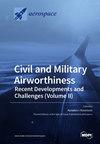SE-CBAM-YOLOv7:基于轻量级注意机制的改进型 YOLOv7,用于在微卫星遥感成像中实时探测小型飞行器目标
IF 2.1
3区 工程技术
Q2 ENGINEERING, AEROSPACE
引用次数: 0
摘要
要在基于微卫星的可见光遥感视频成像中实现飞机目标的实时检测,需要考虑成像有效载荷分辨率、复杂地面背景以及平台和飞机之间相对位置变化的限制。这些因素导致了飞行器目标的多尺度变化,使复杂背景下小型目标的高精度实时检测成为检测算法的重大挑战。因此,本文介绍了一种用于遥感成像的实时飞机目标检测算法,该算法使用了一种改进的轻量级注意力机制,该机制依赖于 You Only Look Once version 7(YOLOv7)框架(SE-CBAM-YOLOv7)。所提出的算法用轻量级卷积挤压-激发卷积(SEConv)取代了标准卷积(Conv),从而降低了计算参数,加快了小型飞行器目标的探测过程,提高了机载实时处理能力。此外,基于 SEConv 的空间金字塔池化和连接空间金字塔卷积(SPPCSPC)模块可提取图像特征。它提高了检测精度,而特征融合部分则整合了卷积块注意模块(CBAM)混合注意网络,形成了卷积块注意模块 Concat(CBAMCAT)模块。此外,它还优化了小型飞机目标在信道和空间维度上的特征,提高了模型的特征融合能力。在公共遥感数据集上的实验表明,所提出的 SE-CBAM-YOLOv7 与 YOLOv7 相比,检测精度提高了 0.5%,mAP 值提高了 1.7%,显著增强了卫星遥感成像中对小型飞机目标的检测能力。本文章由计算机程序翻译,如有差异,请以英文原文为准。
SE-CBAM-YOLOv7: An Improved Lightweight Attention Mechanism-Based YOLOv7 for Real-Time Detection of Small Aircraft Targets in Microsatellite Remote Sensing Imaging
Addressing real-time aircraft target detection in microsatellite-based visible light remote sensing video imaging requires considering the limitations of imaging payload resolution, complex ground backgrounds, and the relative positional changes between the platform and aircraft. These factors lead to multi-scale variations in aircraft targets, making high-precision real-time detection of small targets in complex backgrounds a significant challenge for detection algorithms. Hence, this paper introduces a real-time aircraft target detection algorithm for remote sensing imaging using an improved lightweight attention mechanism that relies on the You Only Look Once version 7 (YOLOv7) framework (SE-CBAM-YOLOv7). The proposed algorithm replaces the standard convolution (Conv) with a lightweight convolutional squeeze-and-excitation convolution (SEConv) to reduce the computational parameters and accelerate the detection process of small aircraft targets, thus enhancing real-time onboard processing capabilities. In addition, the SEConv-based spatial pyramid pooling and connected spatial pyramid convolution (SPPCSPC) module extracts image features. It improves detection accuracy while the feature fusion section integrates the convolutional block attention module (CBAM) hybrid attention network, forming the convolutional block attention module Concat (CBAMCAT) module. Furthermore, it optimizes small aircraft target features in channel and spatial dimensions, improving the model’s feature fusion capabilities. Experiments on public remote sensing datasets reveal that the proposed SE-CBAM-YOLOv7 improves detection accuracy by 0.5% and the mAP value by 1.7% compared to YOLOv7, significantly enhancing the detection capability for small-sized aircraft targets in satellite remote sensing imaging.
求助全文
通过发布文献求助,成功后即可免费获取论文全文。
去求助
来源期刊

Aerospace
ENGINEERING, AEROSPACE-
CiteScore
3.40
自引率
23.10%
发文量
661
审稿时长
6 weeks
期刊介绍:
Aerospace is a multidisciplinary science inviting submissions on, but not limited to, the following subject areas: aerodynamics computational fluid dynamics fluid-structure interaction flight mechanics plasmas research instrumentation test facilities environment material science structural analysis thermophysics and heat transfer thermal-structure interaction aeroacoustics optics electromagnetism and radar propulsion power generation and conversion fuels and propellants combustion multidisciplinary design optimization software engineering data analysis signal and image processing artificial intelligence aerospace vehicles'' operation, control and maintenance risk and reliability human factors human-automation interaction airline operations and management air traffic management airport design meteorology space exploration multi-physics interaction.
 求助内容:
求助内容: 应助结果提醒方式:
应助结果提醒方式:


